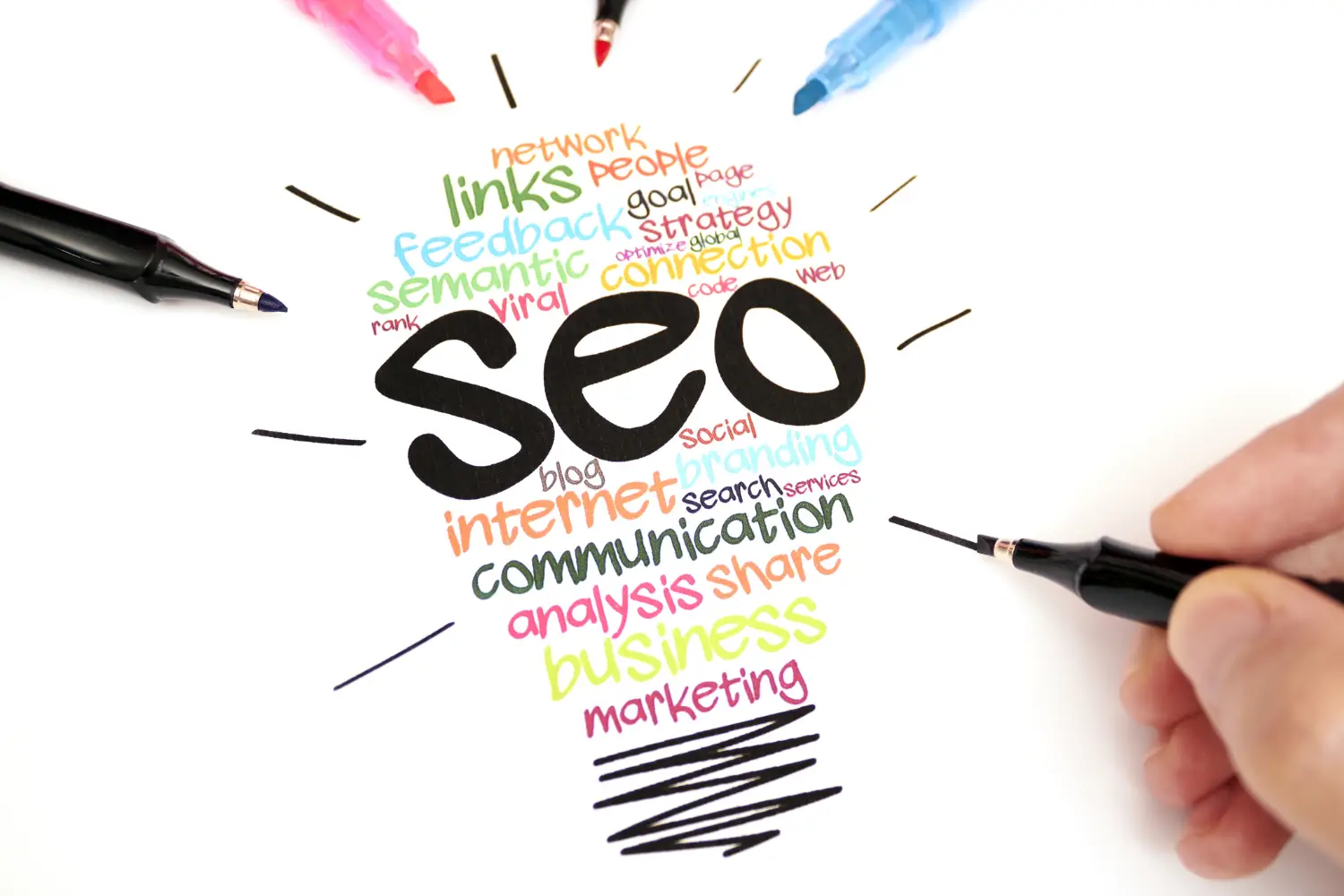Let’s start the New Year with a resolution – in 2024, we will find a perfect balance between local SEO and UX on our website. After all, the two work hand in hand to give you the desired reach and presence amongst your potential audience – local SEO makes your website visible to your ideal audience, and UX makes them happy, leaving behind a lasting impression on their minds. Striking a perfect balance between the two has never been more important than ever before!
What Is SEO?
To put it simply, Search Engine Optimization (or SEO) prepares your website for search engines like Google, Bing, Yahoo, and a few others. If your website is well designed and optimized for search engines, you are far more likely to pop up on the right search term. It’s all about fine-tuning every nook and cranny of your web page and waving a flag to search engines, saying, “Hey, I’m right here; check me out!”
There are many components to an SEO-friendly web page. One of the most important components are keywords. Using the right keywords is like leaving a trail of breadcrumbs for search engines to follow. When your keywords are consistent and appear organically throughout the web page, search engines are far more likely to show your brand to the right audience.
Apart from keywords, good UX and a fast-loading website also play a crucial role in optimizing a website for search engines.

What Is Local SEO?
Local SEO is the next step in SEO, and it comes especially handy to local businesses. The competition to rank on local searches is comparatively lesser than international and generalized searches. This is why it is all the more important to rank in them, especially if you have a local business.
So how do you rank on local searches? By targeting local search terms. A good local SEO strategy does not target search terms in random order; rather, it is a complicated web of local searches that interlink with each other.
What is User Experience (UX)?
Imagine walking into a store where everything feels just right—the music is perfectly soothing, the air smells fresh, the staff is incredibly friendly, but most importantly, you can find what you need without any hassle. That’s UX! A website built with UX designers on the panel will have buttons and content placed in all the right places for customers to browse through and get what they are looking for without feeling overwhelmed or frustrated.
When users browse through your website, effortlessly finding what they need and checking out in a snap, it’s like rolling out a red carpet for their shopping spree. A good user experience never goes unnoticed. If you pay special focus to user experience, bounce rates will go down and engagement and conversion rates will shoot up.

Why Do We Need A Balance Between the Two?
UX and SEO aren’t two separate entities; they’re intertwined in a dance. What good will it do if you have all the visibility in the world but a poor user experience? Customers will click on your link but will leave as soon as they land! On the other hand, if you have a great user experience but no visibility, no one will ever know about your brand. This is why UX and SEO go hand in hand, and it is important to strike a balance between the two.
6 Key Tips To Balance Local SEO and UX in 2024
Although tricky, balancing UX and SEO is not impossible. With these key tips, you will notice a shift in customer behavior in a matter of months!
1. Keep your content in the limelight
Let’s start with the showstopper of a website’s content. Content might seem like the simplest yet trickiest solution for SEO. Why? Because content must be catered to your audience. For instance, if your customers are likely to stumble on your website during their leisure time, they may want something more immersive or something they can enjoy with their morning cup of coffee. If your customers find your website when they are on the go, they are likely to skim through the headings to find what they are looking for.
Currently, search engines favour longer-form content, keeping articles with 2,000 or more words at the top. However, if you look into these longer, high-ranking articles, you will notice they have one thing in common – skimmability. Blogs with clear headings and a clickable table of contents improve user experience.
The key is to use content to provide value and versatility so that customers can jump through it or read the whole page at their convenience. Visual content plays a crucial role too. Colors, images, and graphics add a refreshing break to the paragraphs. Weaving in photos and videos will make the content easier to grasp, creating a favourable user experience.
2. Keyword research

What good is excellent content if it does not reach the right people? That’s where keywords come in. Keywords help search engines understand what your content is all about. Keyword research will help you find a list of long-tail and short-tail search terms potential customers are using locally to find brands like yours. Always remember, the longer the keyword, the more focused the search is.
Search engines are becoming smarter as we speak. Hence, it has become more important than ever to sound organic, despite the number of keywords being used on the page. In fact, stuffing the keyword on the page may flag you by reputable search engines. So good keyword research and smart placement of keywords will strike a balance between local SEO and UX.
Outsourcing keyword research to a reputable SEO company is really handy in moments like these. Experts always start with research and strategically ranking keywords based on their keyword difficulty and overall importance.
3. Map out your pages
There’s a catch with UX and local SEO. Good UX requires simplicity, ensuring that navigating your site is like a stroll in the park, but SEO wants more pages—more pages mean more opportunities to shine in search results. Additionally, local SEO is all about local content, which will further increase the number of pages on your website.
The best way to get the benefits of UX and SEO is to create a flexible map—a sitemap—containing the list of pages on the website and how they will be interlinked with one another. This does two things, increase the number of pages you have on your website, and provide a systematic linking system that does not overwhelm the user, thus maintaining UX.

4. Enhance mobile experience
In 2015, Google declared its allegiance to “mobile-first indexing.” This simply means that the mobile version of your website gets precedence in the search rankings. So if you have an excellent desktop version of your website and a terrible mobile version, you are less likely to rank on search engines.
But don’t let the smaller screen size hinder you, especially when you can use it to your advantage. The screen size and the touch screen can add a unique element to the website’s mobile version.
Good mobile design and development incorporate both UX and SEO. Technical SEO like header design and visibility and on site SEO like meta tags and descriptions improve page rankings whereas navigation buttons and prompt design improve user experience. Things like website speed improve both SEO and user experience, which brings us to the next topic.

5. Loading Speeds
Speed is a game-changer for both SEO and user experience. 3 seconds – that’s all you have to impress your customers. 80% of customers leave if the website takes longer than 3 seconds to load and with every second added to the loading speed there is a drop in the customer’s interest level.
Light code, images and videos embedded from another website will keep your website light while providing interactive content to your customers.
Additionally, a good hosting plan, minimal plugins and extensions will also keep your website light and easy to load. When your page loads faster than 3 seconds, you’re not just winning the race; you’re setting the stage for a top-notch user experience and soaring SEO rankings.

6. Hire An Expert
All the steps mentioned above can be a bit overwhelming especially if you don’t have experience with web design and search engine optimization. This is why outsourcing your SEO and UX needs to an expert can come in handy. Web design agencies like Netlynx Inc, who also provide local SEO services, create phase by phase SEO and UX plans, making sure all your pages rank high on search engines and bring about a positive user experience.
In projects where we have to strictly improve user experience and optimize the website locally, we begin by auditing the site and make the necessary changes. Once the website is ready for new enhancements we begin with keyword research and a site map. This provides the base for SEO and UX work making sure you grow systematically without compromising on user experience.

Conclusion
Both SEO and UX can make or break your online presence and this is why, having systematic growth is crucial to your online presence. We hope this article threw some light on how you can improve your digital game by striking a perfect balance between local SEO and UX. And if you ever need professional help, Netlynx Inc is here to guide you.
We hope 2024 brings you a storm of new customers. All the best!




